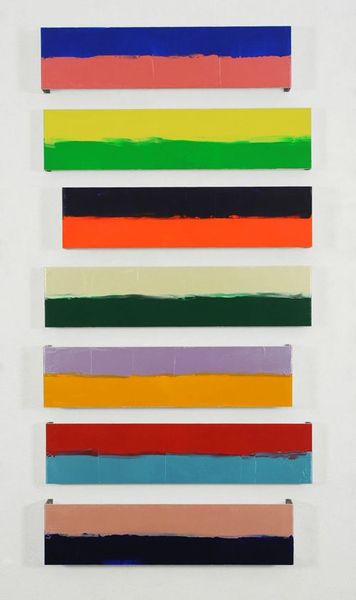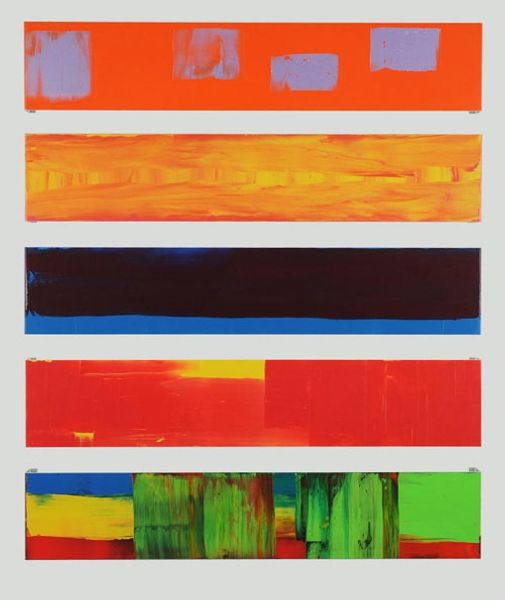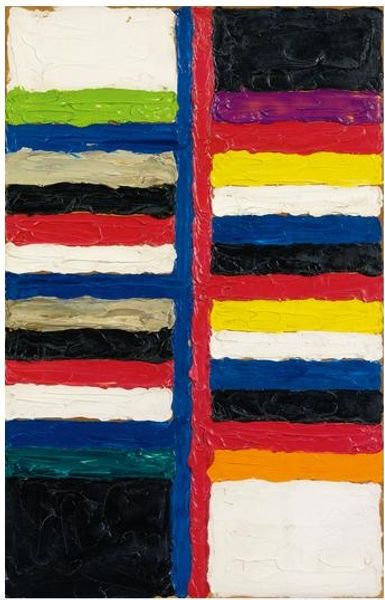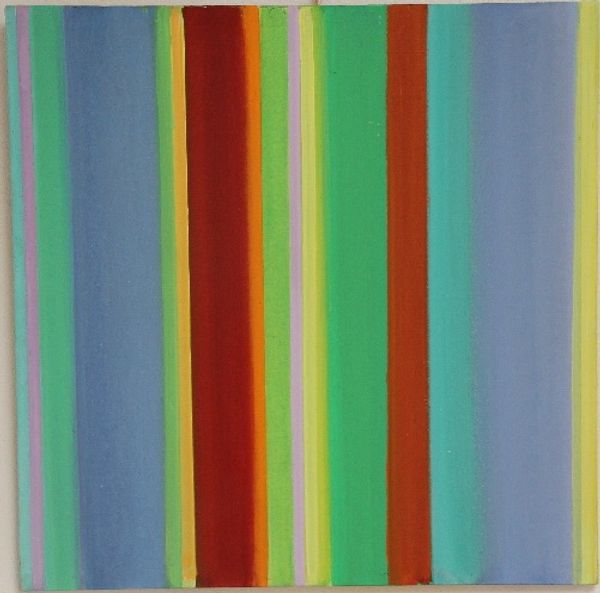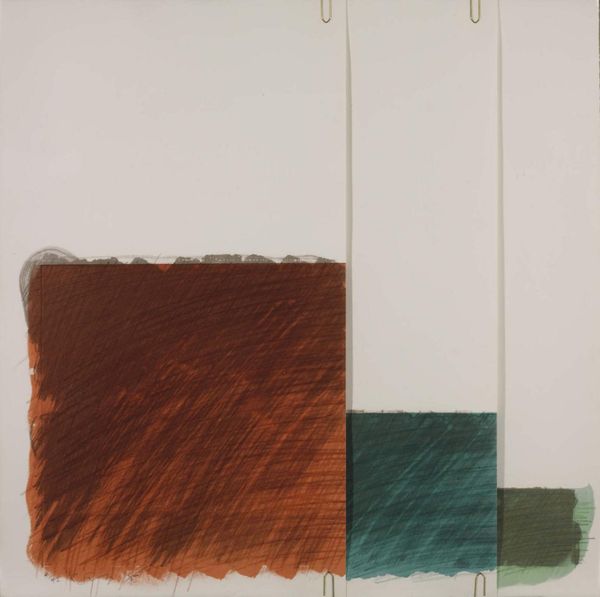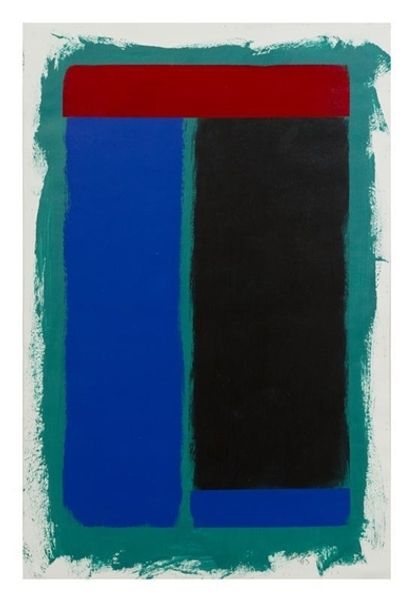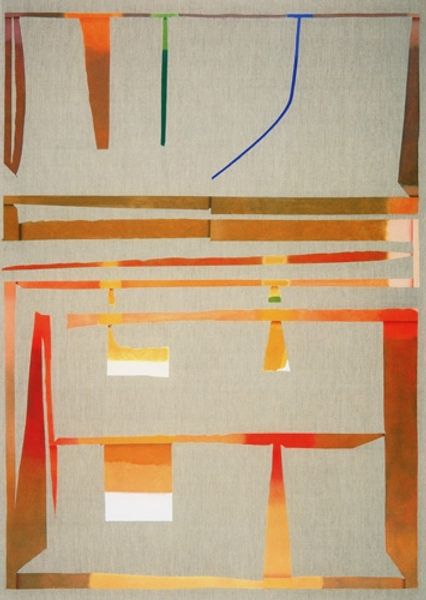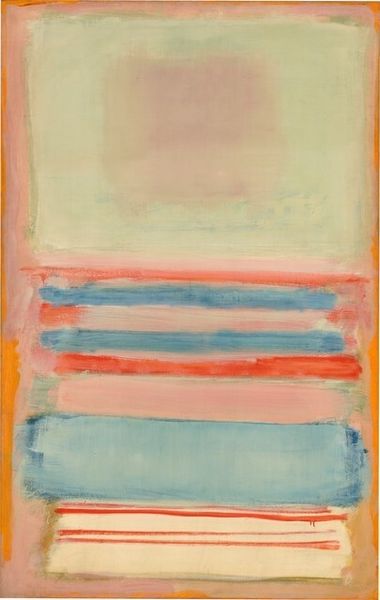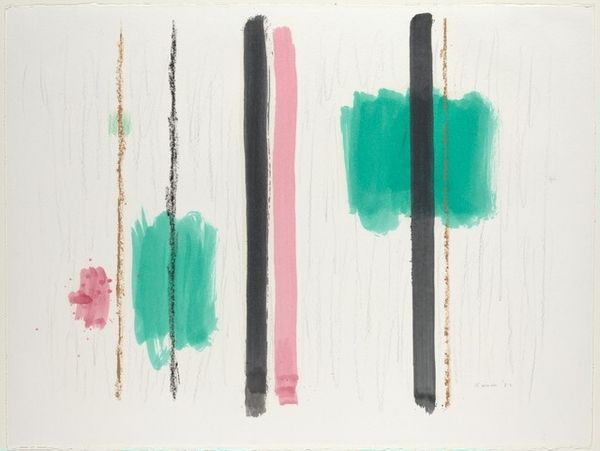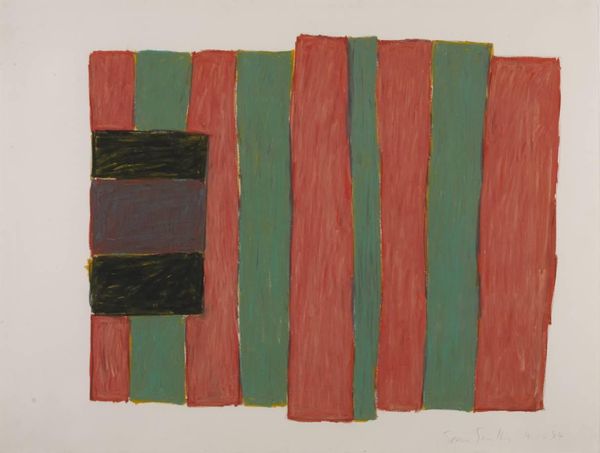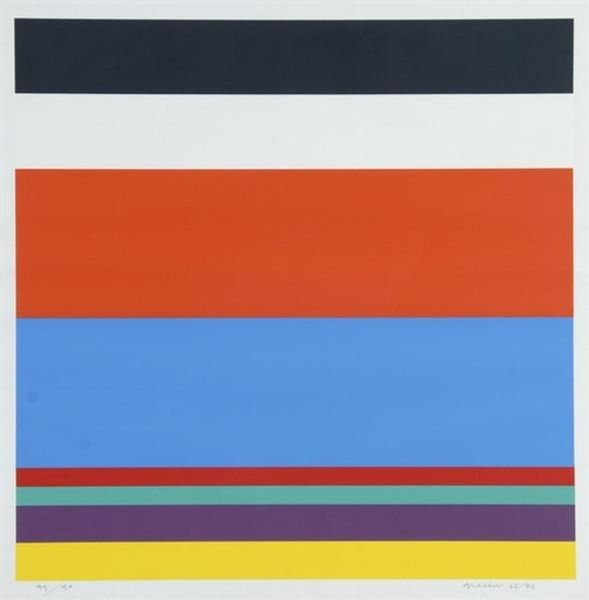
Copyright: Pedro Calapez,Fair Use
Curator: Looking at "Escala de cor #04", painted in 2009 by Pedro Calapez using acrylic paint, I’m immediately struck by how grounding and even comforting these horizontal bands of color are. There's a rhythmic quality to the work, wouldn’t you agree? Editor: Yes, there's a definite rhythm! But, to me, “comforting” isn’t quite the word. Instead, it's the deliberate seriality here, combined with the non-objective abstraction, that draws my eye. What was happening in the art world when Calapez created this series, and how might it reflect societal trends of the late 2000s? Curator: Well, we were navigating a post-financial crisis world, arguably a moment of deep reflection on global structures. Colour-field painting was seeing something of a resurgence; artists exploring how colour and form communicate in a pure, almost detached way. Calapez's choice to present these "scales" of colour vertically might challenge the more typical, serene associations with the horizontal landscape. It prompts a different kind of contemplation. Editor: I like that. The placement evokes something more structural. Are we seeing commentary on hierarchies here? And it's not quite Pop Art, but I see something reminiscent in that accessible visual language; each “level” reads easily as its own distinct entity. The individual planks become modules or data points of color experience when aligned on the gallery wall. It definitely triggers that recognition of the colour seriality that we see in popular culture. Curator: I'd push back slightly on that—though I appreciate the association—the materiality is very apparent; brushstrokes visible and layered hues disrupt any easy connection to something mass produced or “pop.” It’s important to me to acknowledge the painter’s mark. The colour isn’t just "there"—it’s placed. You know, one of the things that I think about is how Calapez utilizes that repetition. Serial art emphasizes a system or process rather than, let’s say, self-expression. The effect here invites a viewer to move past just the aesthetic into a questioning of his method. Editor: So the social element comes through that questioning, pushing us past formalism into that realm of intellectual participation with art. Food for thought as always. I find I appreciate the subtle variations more having this in mind. Curator: Indeed! Thanks, it's a work I never tire of engaging with, each visit always brings a fresh insight.
Comments
No comments
Be the first to comment and join the conversation on the ultimate creative platform.
